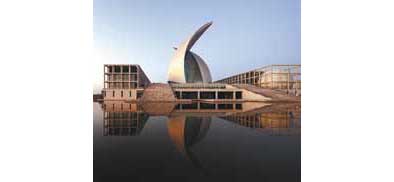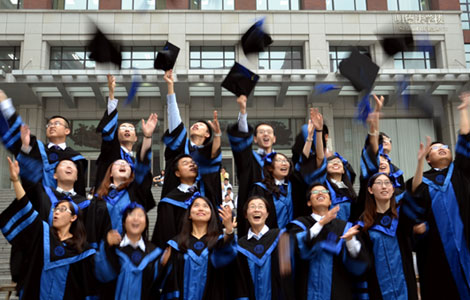German touch in Chinese buildings
Updated: 2013-08-22 22:57
By Sun Yuanqing (China Daily)
|
|||||||||||
Among all the international players in architecture in China, GMP is one of the most productive.
The German architecture agency is now revealing the secret of success: "designing in dialogue".
 |
 |
|
German architecture firm GMP has been involved in more than 80 projects in China, including the National Museum of China (left) in Beijing and China Maritime Museum in Shanghai. Photos provided to China Daily | |
The exhibition, Designing in Dialogue: The Architecture of von Gerkan, Marg and Partners, is currently displayed in the National Museum of China in Beijing. It reviews 41 projects with sketches, models and photographs, illustrating how the firm realizes its architecture philosophy through dialogue in different parts of the world.
"Architecture is art, but it is art with social responsibility," says Meinhard von Gerkan, founder and partner of the firm. "Therefore, we have to connect to the people and surrounding locale to make the projects successful."
"For the last 15 years, we have been learning how to communicate and work with Chinese people. China has become my second home and a very important market for GMP," he says.
The firm has done more than 80 projects in China since arriving in 1999. Landmark projects include the National Museum of China, Qing-dao Grand Theater and Shanghai Oriental Sports Center.
"It is an honor for us to exhibit the architecture that we designed," Von Gerkan says.
The German company, along with China Academy of Building Research, won the commission to reconstruct and extend the National Museum of China in 2004, ahead of 11 international architectural firms, such as Foster and Partners, Kohn Pedersen Fox and OMA.
After much discussion with the client, the design scheme managed to merge the new museum building with the old one while maintaining its own characteristics.
Both the styles of the old building and its surroundings of Tian’anmen Square and the Forbidden City were echoed in the new addition in a modernized way. The museum is now the largest in the world.
"It is a dialogue based on contrast," says Von Gerkan. "The old building bears the collective memories of many people. By echoing the old building, the new one shows how Chinese architecture evolves into a new era."
Dialogue with the local landscape and philosophy is also emphasized in GMP projects. The Chongqing theater resembles a floating ship to resonate with the nearby Yangtze River, while Tianjin theater is inspired by the connection between earth and the sky, a fundamental thinking in Chinese philosophy.
"GMP is very good at balancing the requirements of the client and their own design concept," says Zhao Chunshui, chief architect at Tianjin Urban Planning and Design Institute.
"Their strong rationality and logicality works well with Chinese clients. But dialogue is only their method. What really matters is their design philosophy: simplicity, order and diversity."
Xue Qiuli, associate professor of architecture at City University of Hong Kong, thinks the timing is right to promote these values in China.
"What GMP promotes in its works used to be very popular in Chinese architecture. But they have been confused in recent decades."
The company was founded in 1965 in Hamburg by Meinhard von Gerkan and Volkwin Marg. It now has 400 employees in 10 offices in Asia, Europe, South America and Africa. More than 200 staff members are in China.
Related Stories
Take western-style architecture back home 2013-07-19 15:21
Spot on fabulous ancient architecture in Wudang 2013-04-19 09:11
Suzhou receives compliments for the reuse of architecture relics 2013-08-08 17:10
Tibetan Buddhist architecture restored to its original glory 2012-12-05 10:17
Beijing Ancient Architecture Museum 2012-12-08 15:38
Today's Top News
Bo Xilai denies bribery charges against him
German mitten crabs not 'qualified'
FDI surges 24% in July
Case breaks ground for transparency
PMI turnaround lifts outlook
Shenzhen restroom users face fines for poor aim
Chinese scientists asked to improve toilet
US senator's comments draw fire
Hot Topics
Lunar probe , China growth forecasts, Emission rules get tougher, China seen through 'colored lens', International board,
Editor's Picks

|

|

|

|

|

|





